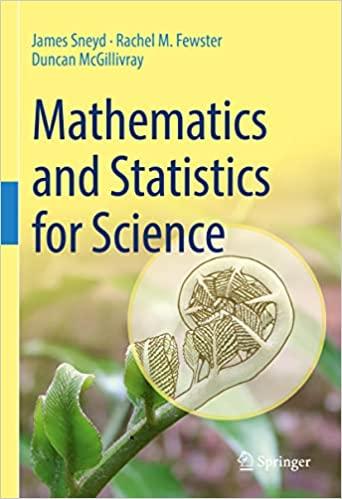A simple (but not entirely unrealistic) model of a non-lethal infectious disease assumes that the population is
Question:
A simple (but not entirely unrealistic) model of a non-lethal infectious disease assumes that the population is divided into two classes; S (those who are susceptible to being infected)
and I (those who are already infected). When a susceptible meets an infected, the susceptible can become infected (at a given rate, k1, say), while infecteds recover (with rate k2) and become susceptible again.
For example, gonorrhea is an example of a disease that behaves in this way. It’s spread by person-to-person
(sexual) contact but you generally recover from it. However, once you recover you’re not immune and so can become infected again.
We can describe such a disease by the "equations"
S + I k1
−→ I + I, I k2
−→ S.
If we assume that the interactions obey the law of mass action we can write the model
a. Show that S + I = T, where T is a constant.
b. Hence, show that dS dt = (T − S)(k2 − k1S).
Determine the steady states of this equation, calculate their stability, and describe the behaviour of typical solutions.
Interpret your result from the scientific point of view.
Warning: your answers will depend on whether k2/k1 < T or k2/k1 >
T. You’ll need to treat each case separately.
c. What is the differential equation for I? Determine the steady states of this equation, calculate their stability, and describe the behaviour of typical solutions. Interpret your result from the scientific point of view.
d. Solve the differential equation for I with the initial condition I(0) = 1. Choose your favourite values for k1, k2 and T, and check that your explicit solutions agree with your answers from the qualitative analysis.
Step by Step Answer:

Mathematics And Statistics For Science
ISBN: 9783031053177
1st Edition
Authors: James Sneyd, Rachel M. Fewster, Duncan McGillivray






